Extended Deep Plane Facelift in Korea
Turn Back Time with Precision: The Art of Extended Deep Plane Facelift
A facelift is much more than simply tightening loose skin. It’s a way for individuals to rediscover their natural confidence and youthful appearance. As time passes, aging can alter both how a person looks and how they feel about themselves. Through expert facelift surgery, deeper signs of aging are carefully corrected to restore natural facial structure and balance. The result is not an artificial change, but a refreshed and confident version of oneself, where the outer appearance once again reflects the energy and vitality that come from feeling renewed inside.
At VIP Plastic Surgery, when patients share their experiences after facial rejuvenation, they don’t just talk about looking younger. It’s more than just vanity. They speak of inner confidence, new business opportunities, deeper connections in their relationships, and a rekindled joy in social situations they once avoided. It’s about walking into a room with your head held high, knowing that your outer appearance finally matches the youthful energy you feel inside.
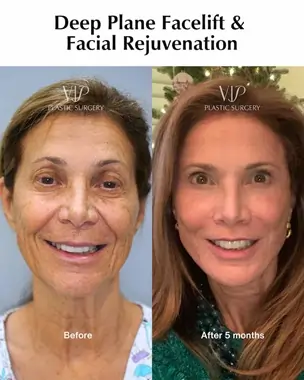
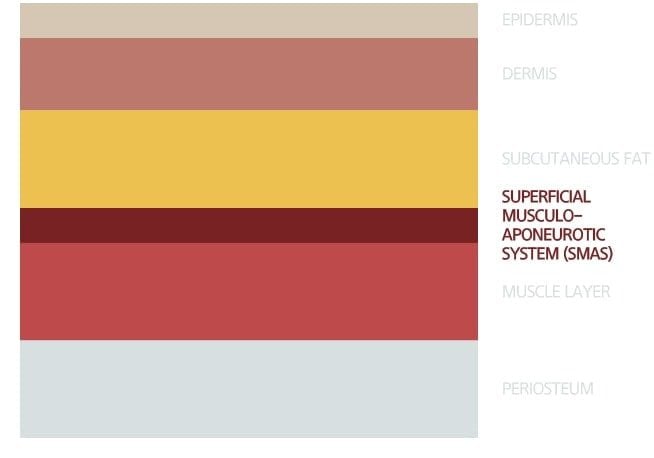
An expertly performed facelift does more than tighten skin—it artfully restores the graceful contours of your youth. Picture an elegantly defined jawline that frames your face beautifully, smooth transitions from cheek to chin, and a natural, refreshed appearance that has friends asking about your “beauty secret” rather than your surgeon. This isn’t about changing who you are; it’s about revealing the you that time has hidden, as if you’ve discovered a photograph of yourself from 15 years ago and stepped into it.
How Your Face Ages: More Than Just Skin Deep
Facial aging is a multifactorial process involving changes in skin, bone, and soft tissue:
- Downward shifting of the subcutaneous fat layer beneath the skin
- Loosening of the SMAS (Superficial Musculoaponeurotic System) layer
- Loss of facial volume and structure
- Hollowing of the submalar area
Understanding this complex anatomy is essential for plastic surgeons to achieve successful and natural facelift results.
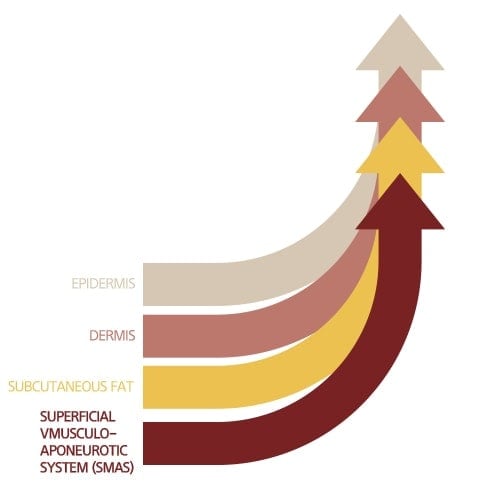
Dr. Lee’s Invisible Ear Incision Line
When skin and SMAS layers separate due to inadequate dissection or insufficient fixation, prominent scars can develop along incision lines near the ear. Therefore, proper surgical technique requires securing incisions to deeper tissue layers for optimal healing and minimal scarring.
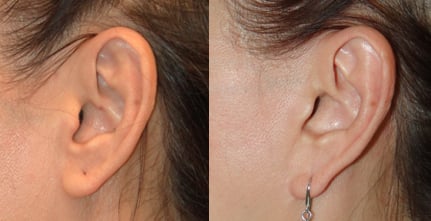
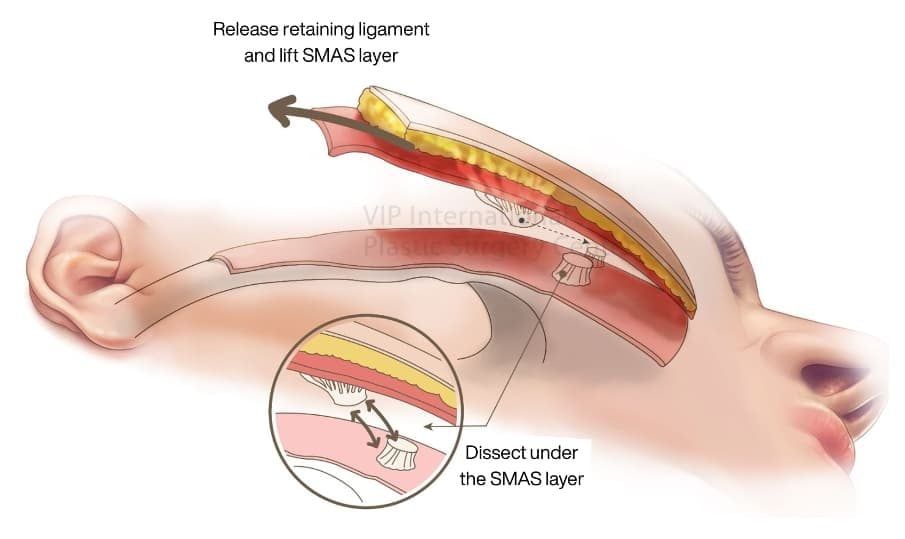
The Key to Natural-Looking Facelift Results
At VIP Plastic Surgery, plastic surgeons highly focus on below criteria for successful facial rejuvenation.
- Lifting and repositioning the SMAS layer for long-lasting support
- Creating balanced tension across all tissue layers
- Securing incisions to deeper dermal layers to minimize facelift scars
- Lifting deep buccal fat pads to the appropriate position
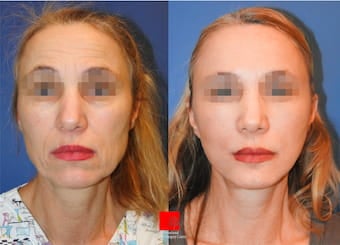
VIP Plastic Surgery Korea’s Premier Approach
At VIP Plastic Surgery Korea, the Extended Deep Plane Facelift represents the pinnacle of modern facial rejuvenation techniques. With patients traveling from over 50 countries to experience facial rejuvenation, VIP Plastic Surgery Korea understands that each face tells a unique story. Whether treating patients of Caucasian, Asian, Caribbean, Black, or mixed heritage, the clinic tailors every surgical approach to honor individual ethnic features and personal aesthetic goals, ensuring each patient receives the VIP treatment they deserve.
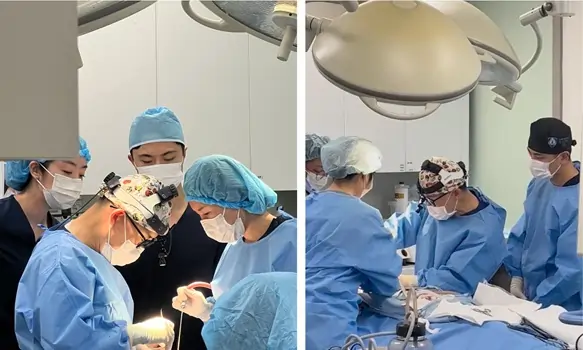
Deep Plane Facelift Specialist Dr. Myung Ju Lee’s 25 Years of Expertise
Starting his career at UT Southwestern Medical Center as an exchange professor, he had an opportunity to receive direct training from the best plastic surgeons in the United States. Through his extensive research and firsthand observation of facelift evolution, he has led to a profound understanding: successful facial rejuvenation requires mastery of complex facial anatomy and advanced surgical techniques, as aging begins deep within the muscle tissue, not merely at the skin’s surface. Dr. Myung Ju Lee regularly travels the world to teach other surgeons his advanced techniques at medical conferences such as ISAPS.
2025 International Society of Aesthetic Plastic Surgery (ISAPS)

Yet, despite his expertise, he believes in continually learning something new, constantly updating his skills with the latest innovations to deliver the very best results possible for his patients.
Never Stop Learning: The Philosophy Behind Surgical Excellence
At UT Southwestern Medical Center
With Dr. Rohrich (Master of facelift and rhinoplasty, former editor-in-chief of the journal PRS) and Dr. Guyuron (master surgeon of facelift)
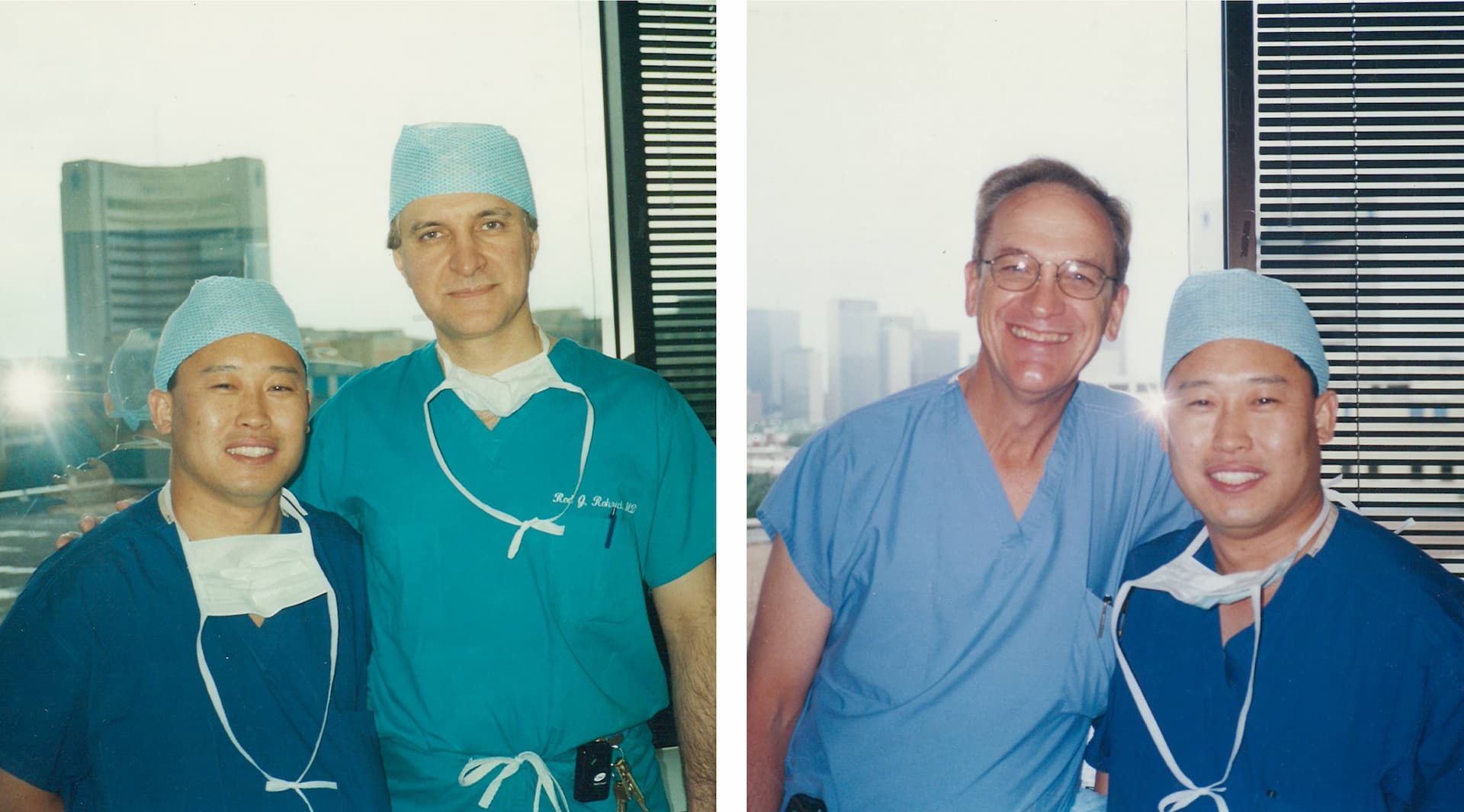
Passion is the driving force for Dr. Lee, continuously elevating his craftsmanship in plastic surgery. For Dr. Lee, this journey of perpetual learning began with transformative training under world-renowned facial rejuvenation experts (facelift and rhinoplasty experts) at UT Southwestern Medical School—an experience that fundamentally shaped his approach to surgery.
Even until now, his hunger for knowledge has never diminished. Dr. Lee understands that in the rapidly evolving field of plastic surgery, yesterday’s techniques may not deliver tomorrow’s best results. Each year, Dr. Lee makes it a priority to visit and learn from renowned plastic surgeons around the world, such as in the United States, Turkey, and Europe, bringing new perspectives back to his practice.
Always Learning
Excellence Through Eternal Learning: A lifetime dedicated to perfection
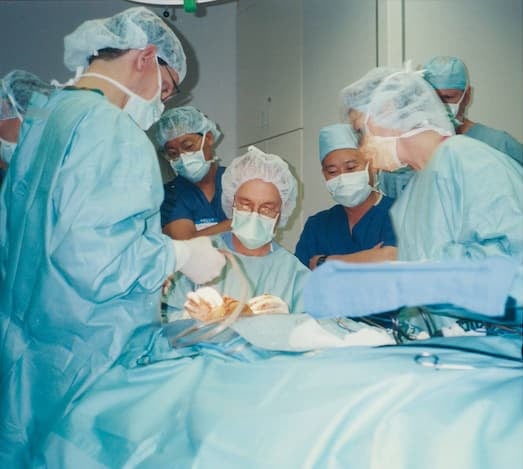
Training from master Surgeons
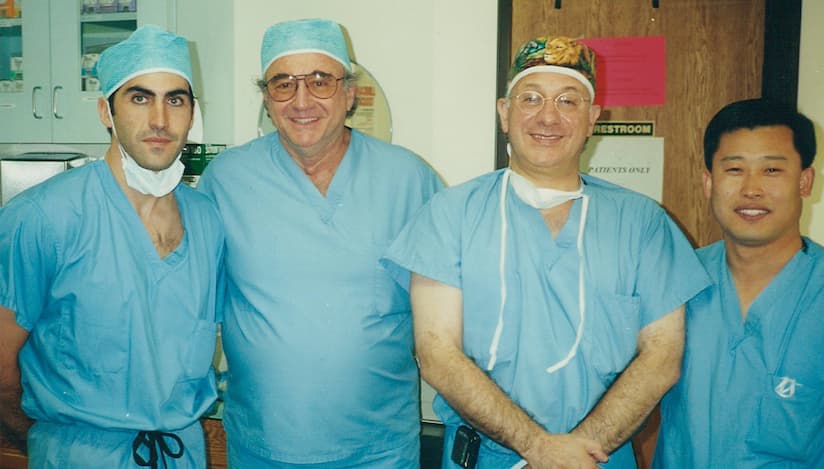
with UT Southwestern Medical Center Colleagues
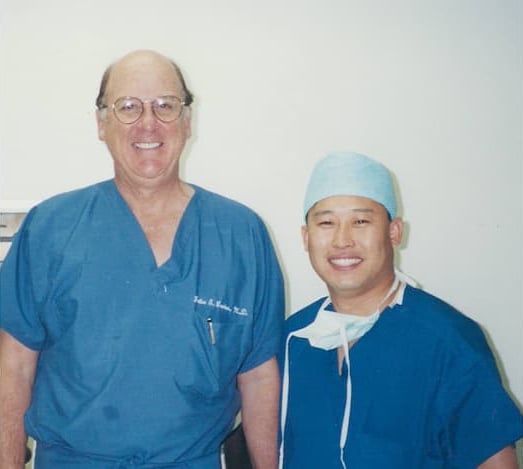
with Dr. Barton (pioneer of High-SMAS Facelift)
True to his belief in continuously learning, Dr. Lee regularly opens his operating room to passionate surgeons from around the world for observation as well. By sharing knowledge and welcoming fresh perspectives, he contributes to elevating surgical standards globally while continuously refining his techniques.
Why the Extended Deep Plane Facelift Leads Modern Facial Rejuvenation
Recent advancements in facelift techniques and deeper understanding of facial anatomy have positioned the extended deep plane facelift as the gold standard in facial rejuvenation surgery. This sophisticated approach offers patients superior outcomes in three critical areas:
- Enhanced Safety through precise anatomical dissection
- Natural-Looking Results that preserve facial expressions
- Long-lasting rejuvenation that last 10-15 years
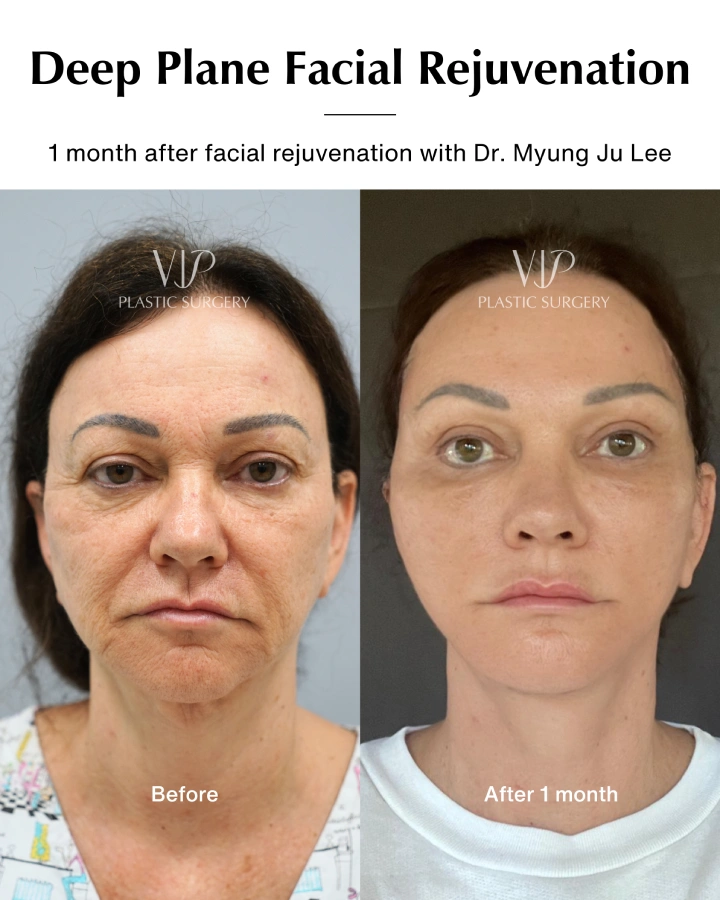
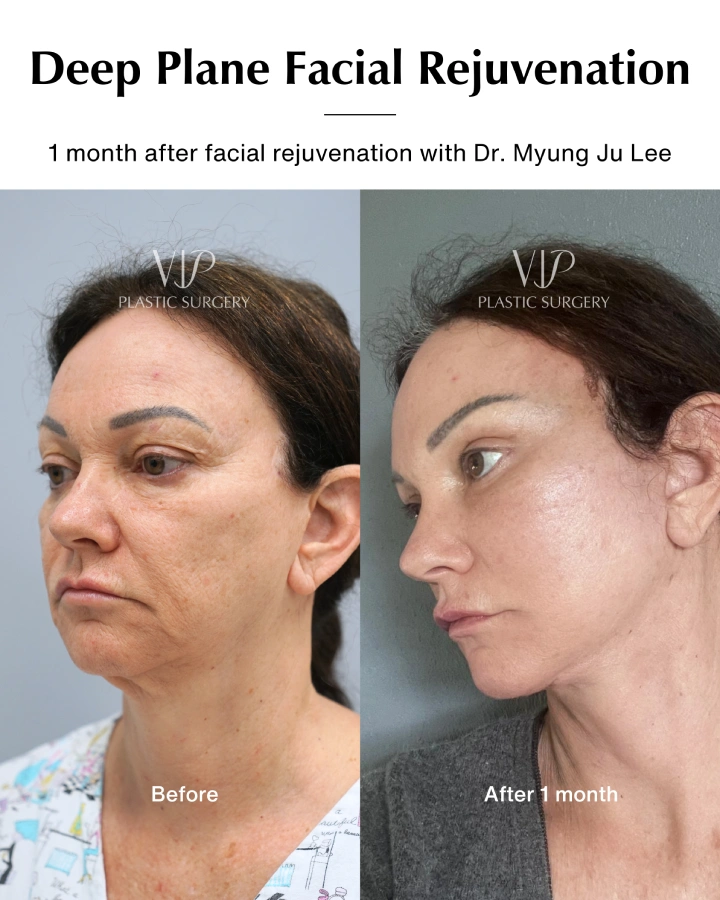
Beyond One-Size-Fits-All: Why Asian Faces Need a Customized Approach
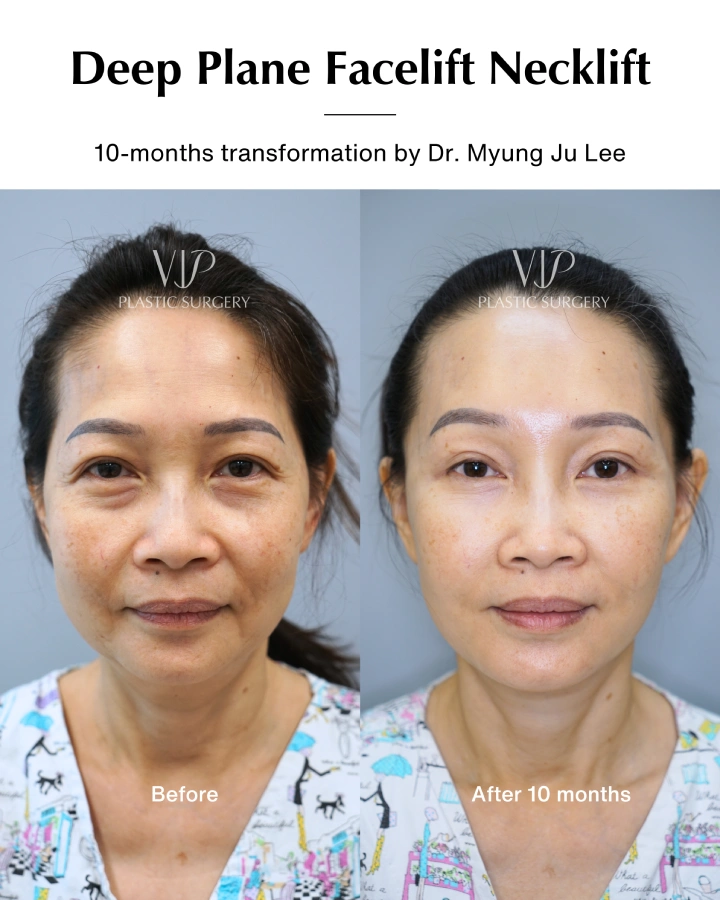
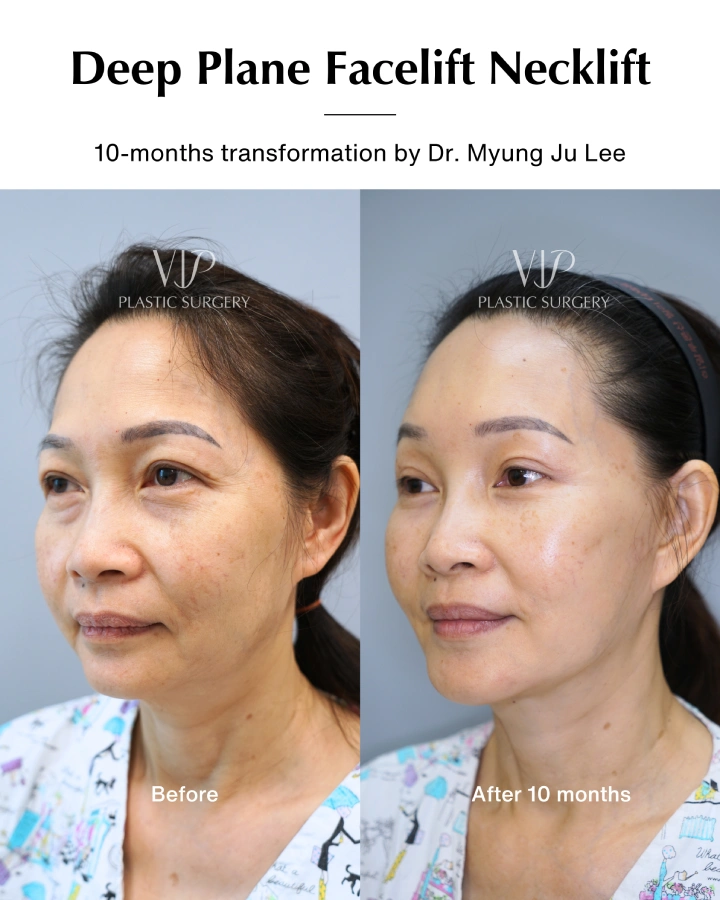
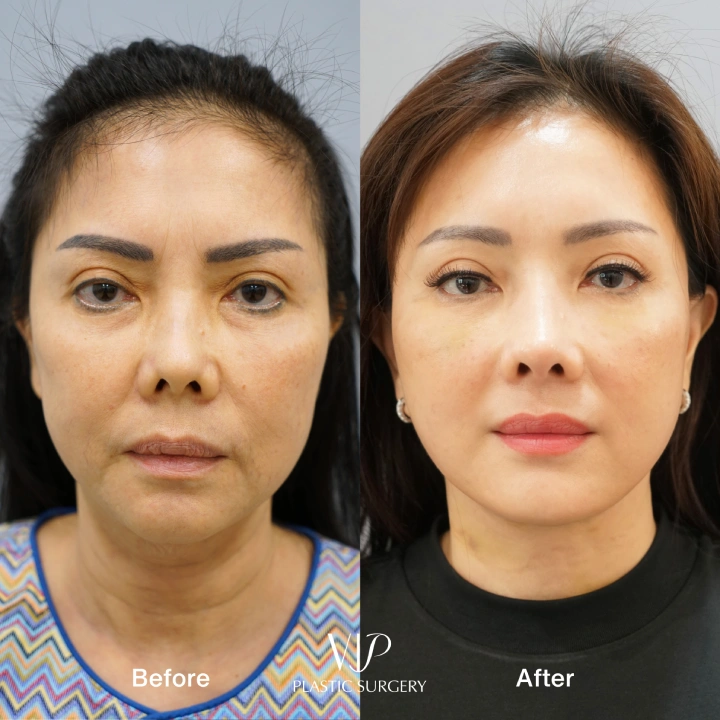
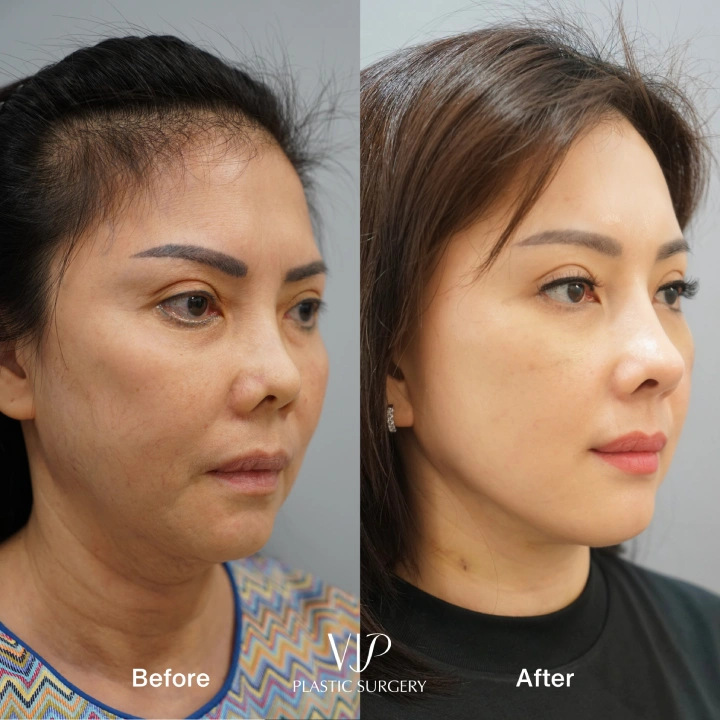
Distinctive Asian Facial Characteristics That Facelift Results
Asian faces possess unique anatomical features that must be carefully considered during facial rejuvenation:
- Wider cheekbone distance requiring specialized lifting vectors
- Flatter facial profile with central face retrusion needing volume consideration
- Thicker skin texture with increased fibrous tissue adhesion, demanding a precise technique
- Rounder, heavier facial structure requiring comprehensive contouring
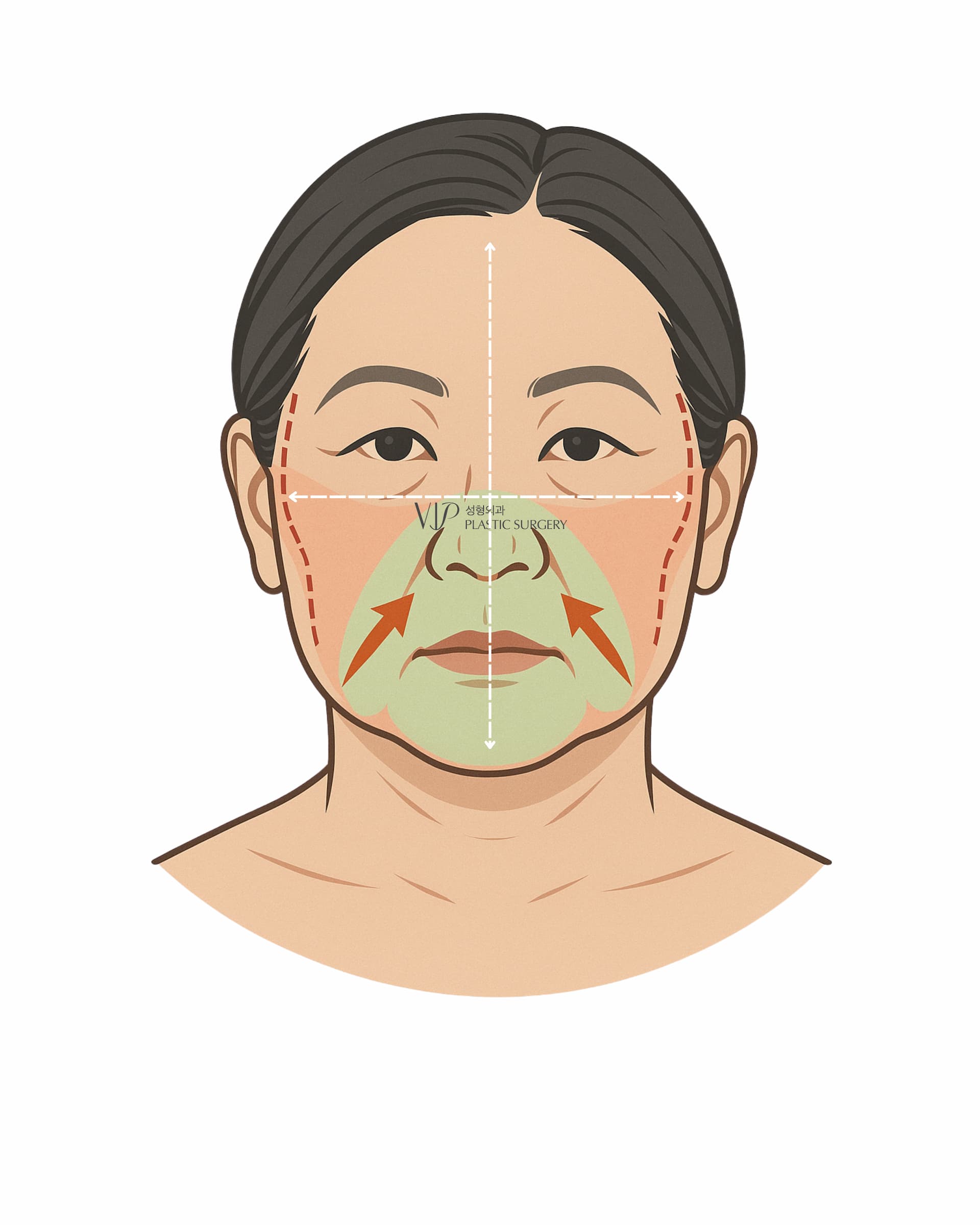
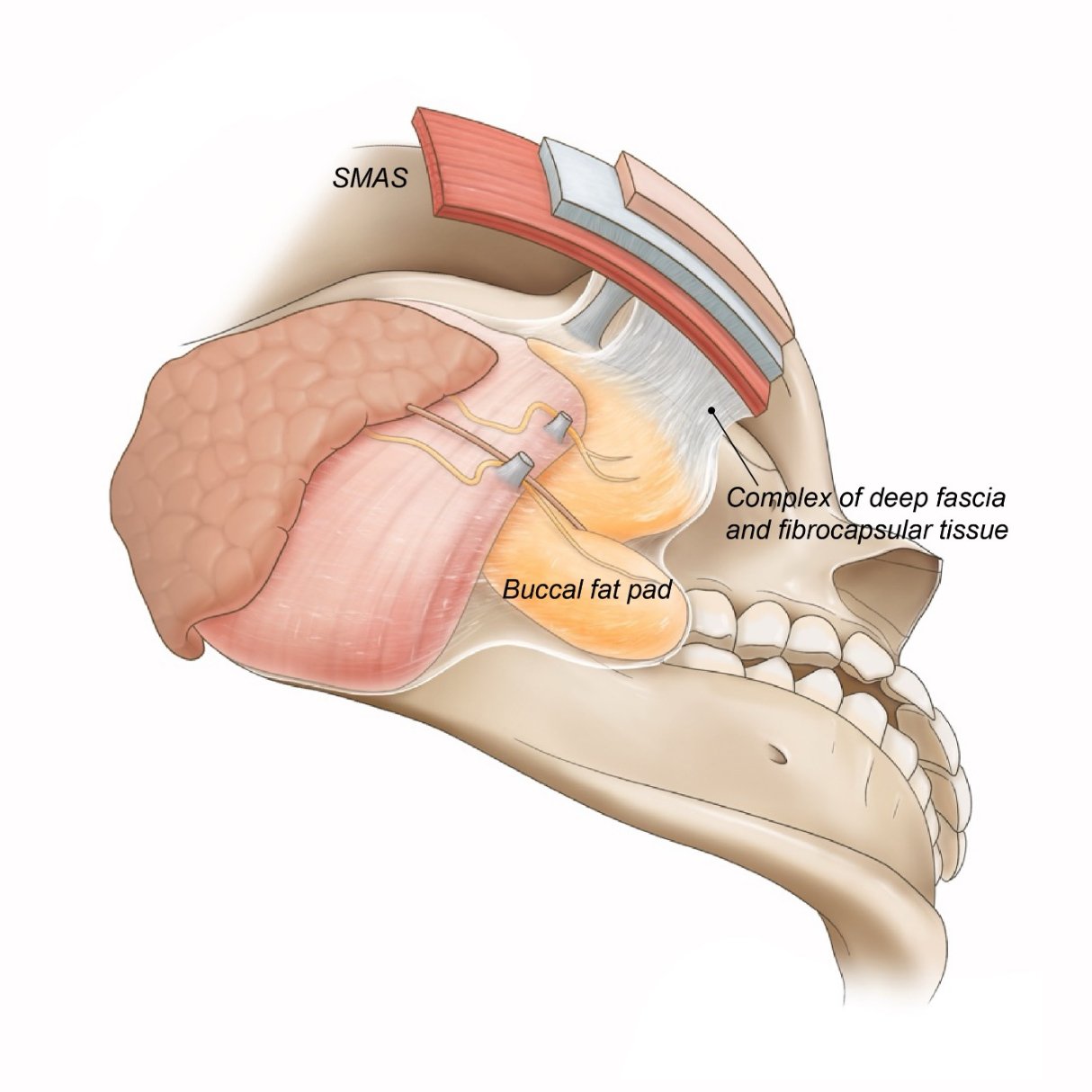
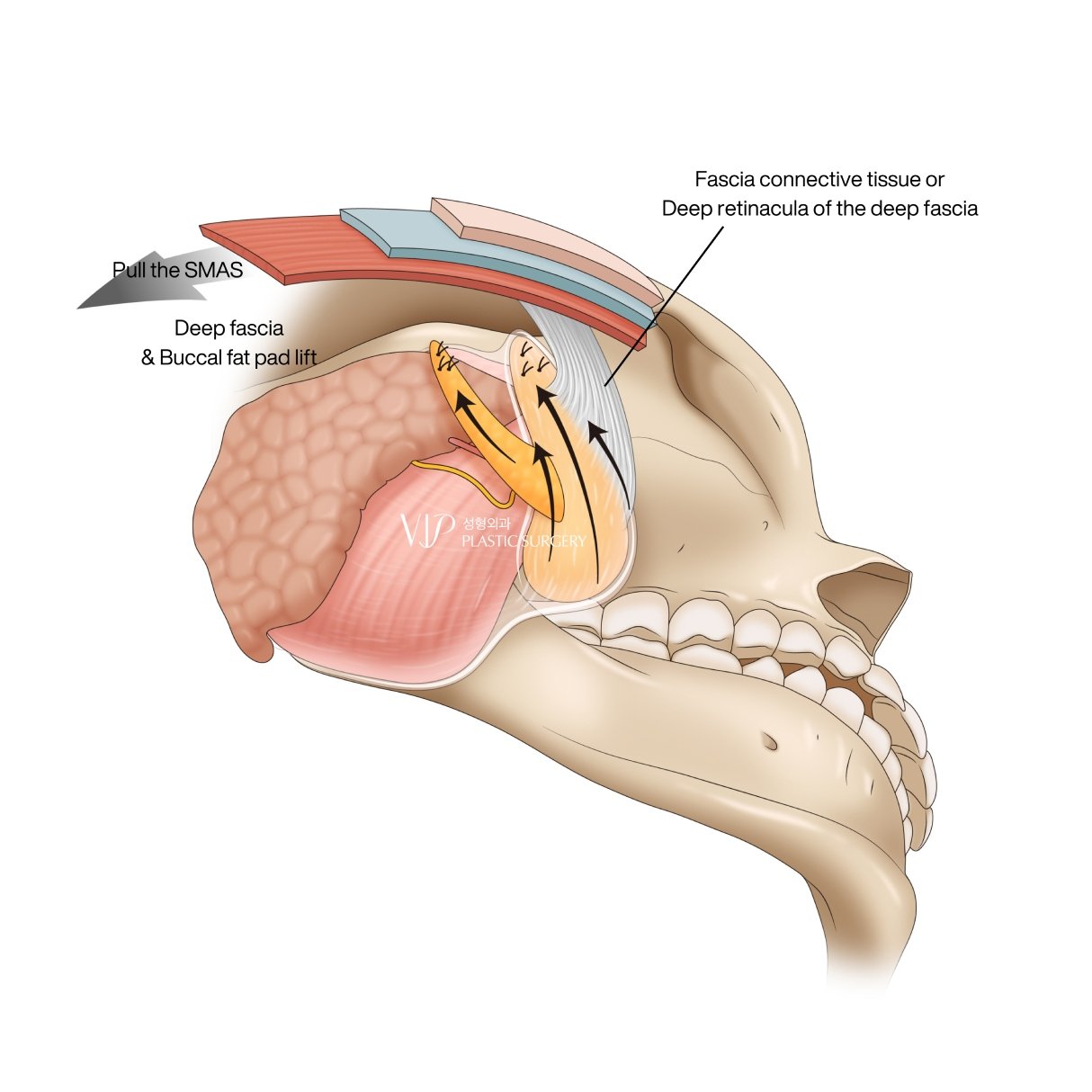
For patients with these distinctive features, Dr. Lee may incorporate specialized procedures during the extended deep plane facelift to achieve optimal results:
- Superficial jowl line liposuction for refined lower face contouring
- Buccal fat removal to enhance facial definition
- Buccal fat pad lift – a key procedure for creating smooth, elegant jawline transitions
Male Facelift: Tailored Facial Rejuvenation for Men
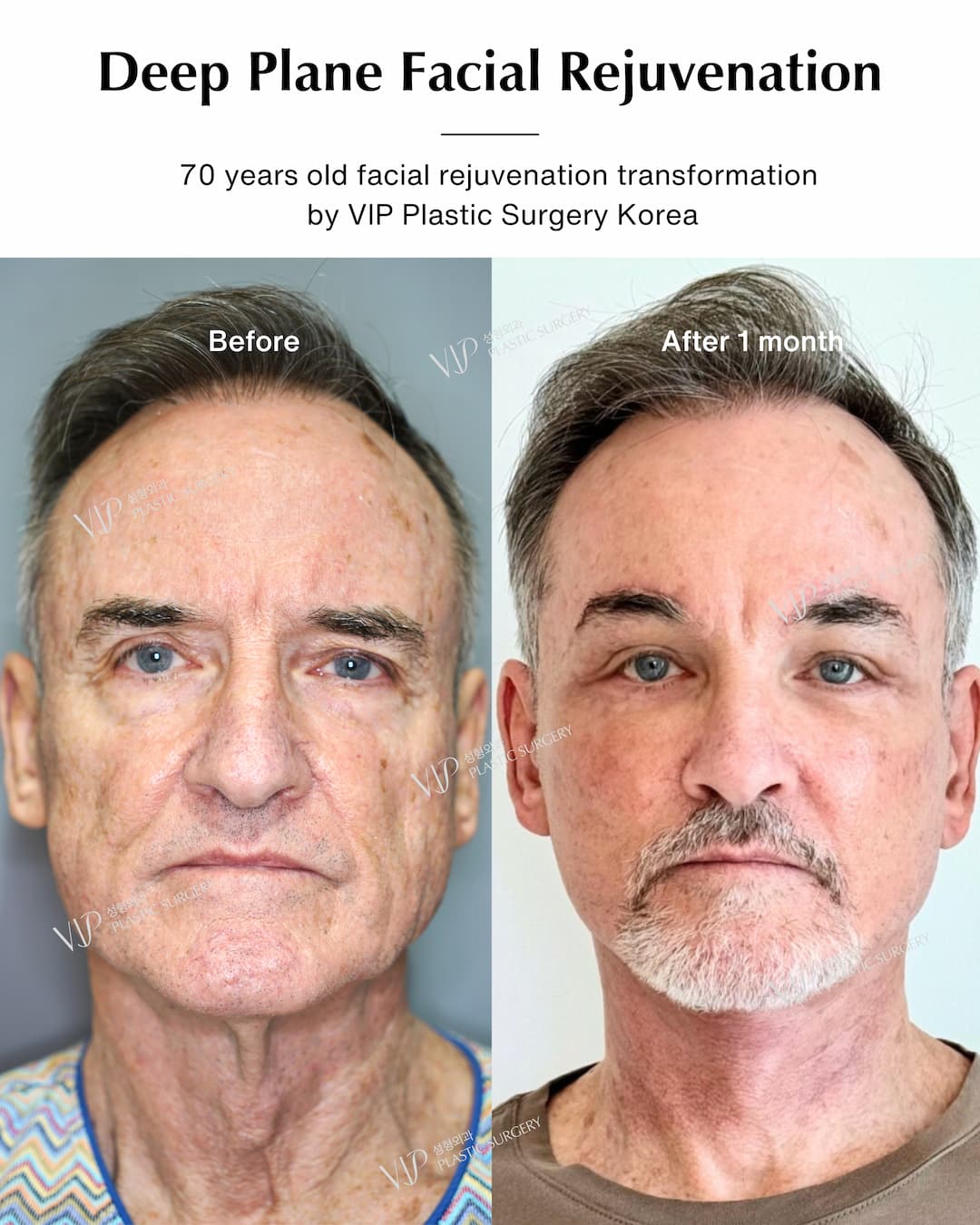
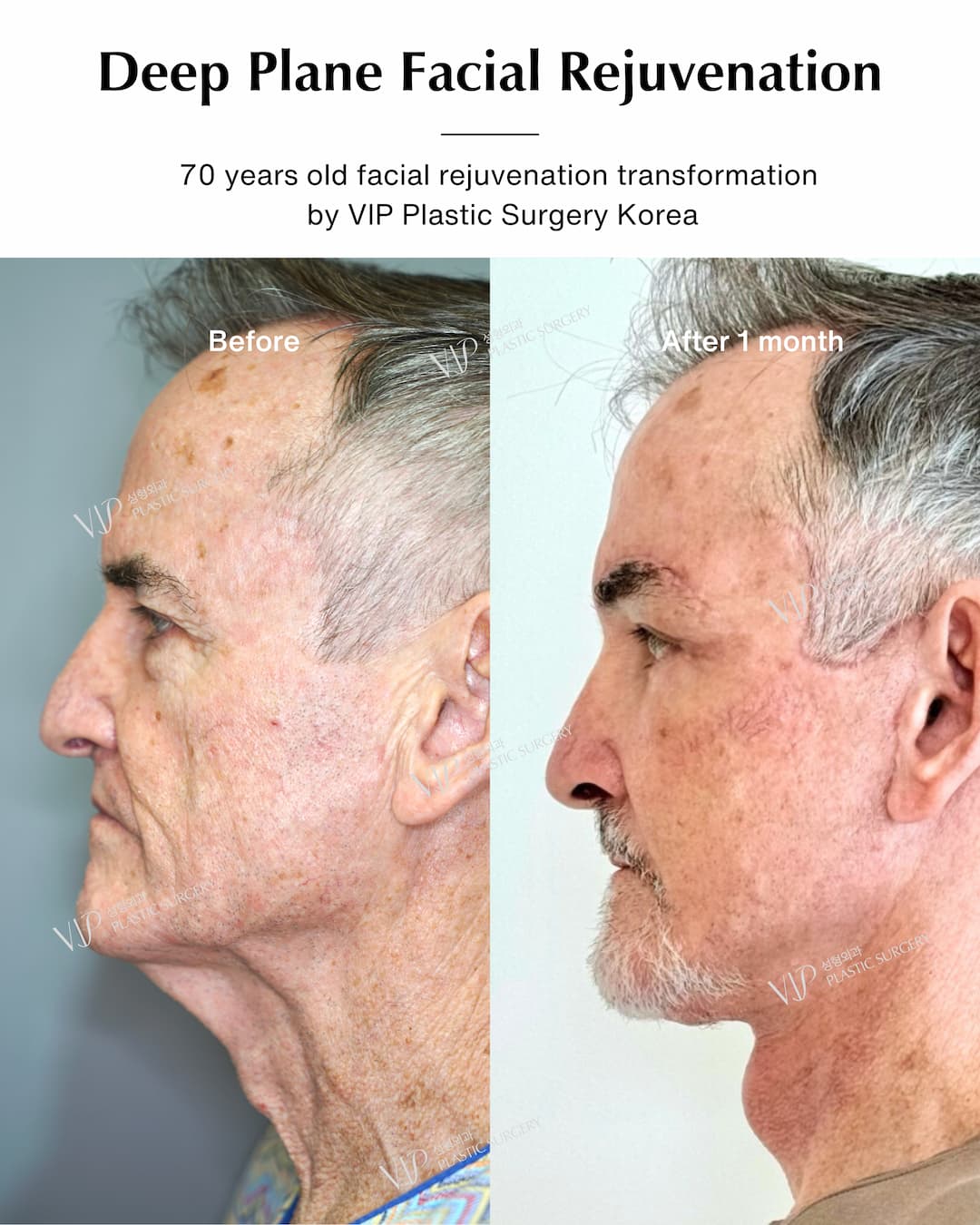
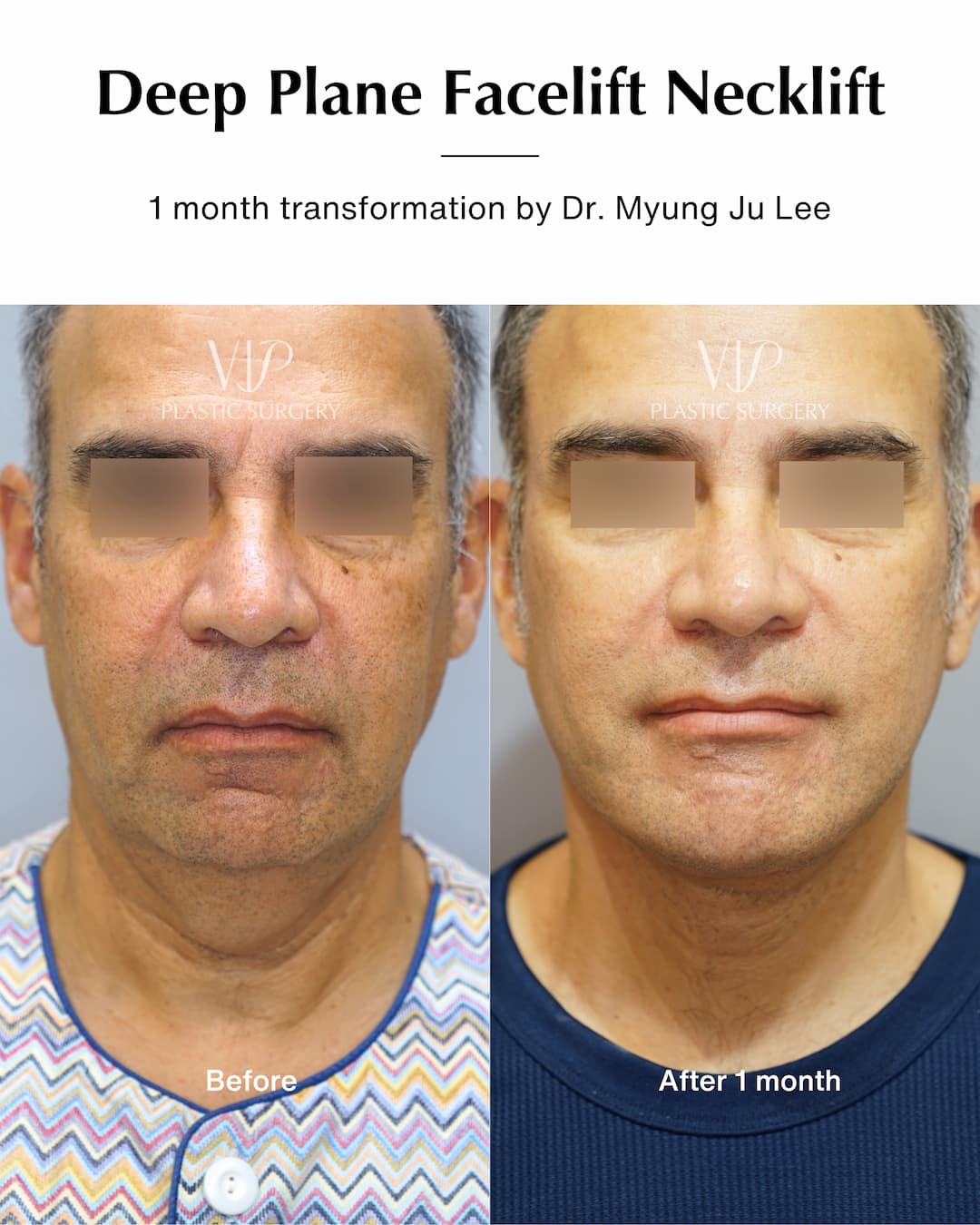
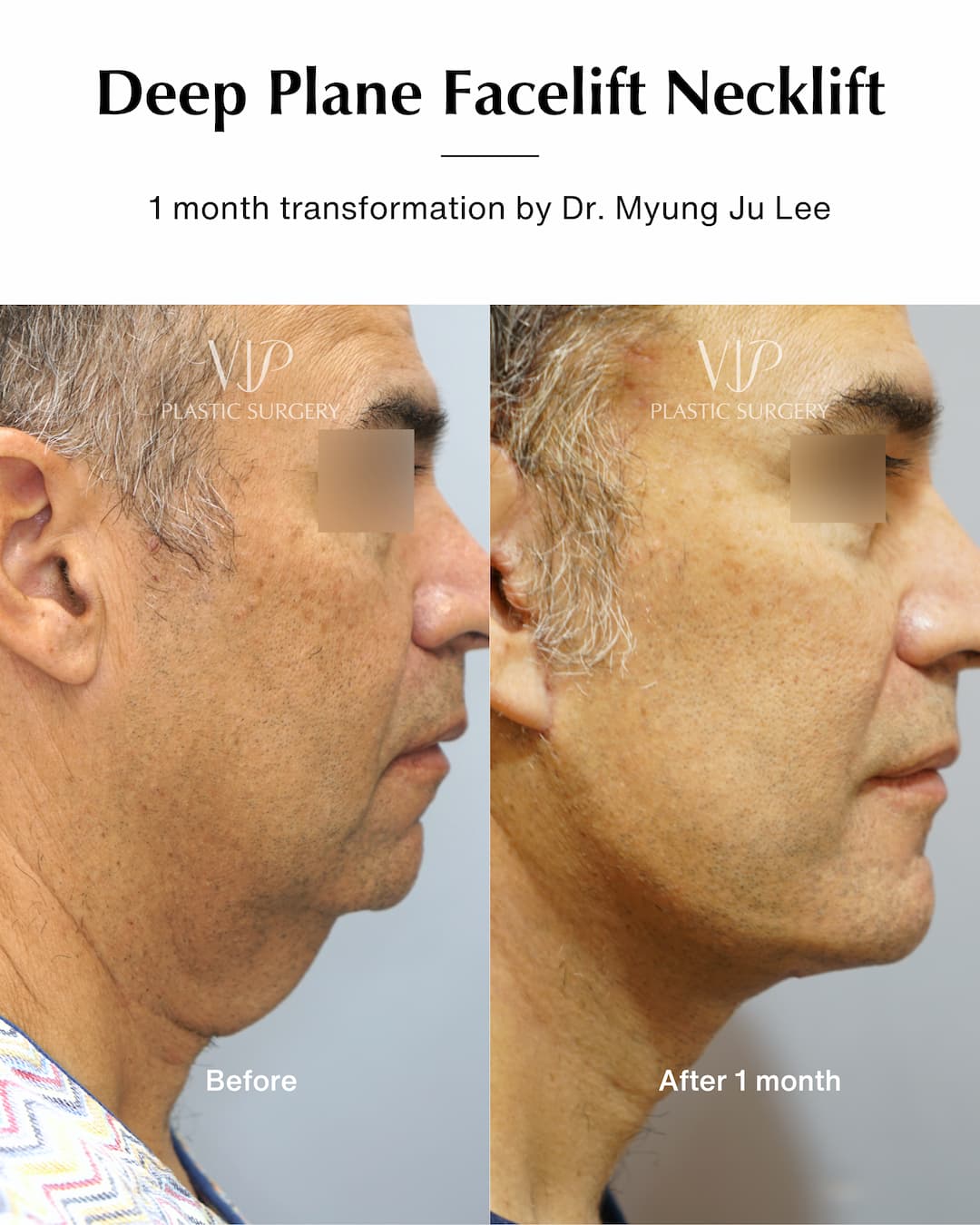
Understanding the Unique Aspects of Male Facial Surgery
Facelift surgery is no longer exclusively sought by women. Today, an increasing number of men are choosing facial rejuvenation to enhance both their personal confidence and professional presence. Male facelift procedures require a distinctly different approach than those performed on female patients. Key anatomical differences that surgeons must consider include:
- Thicker, more fibrous skin texture requires specialized surgical techniques
- Stronger facial musculature demands precise tissue handling
- Denser blood vessel networks necessitate meticulous surgical planning
- Facial hair patterns that must be preserved and properly aligned
- A broader bone structure requires different lifting vectors
- Larger salivary glands require a special neck definition surgery called Deep Neck Surgery
Achieving Natural, Masculine Results
The goal of male facelift surgery differs significantly from female procedures. While women often desire softer, more lifted contours, men typically seek:
- Preserved masculine features that maintain their strong facial character
- Sharp, defined jawline and neckline that projects authority and vitality
- Natural results that avoid any “operated” appearance
- Subtle rejuvenation that colleagues notice as “looking well-rested” rather than surgical
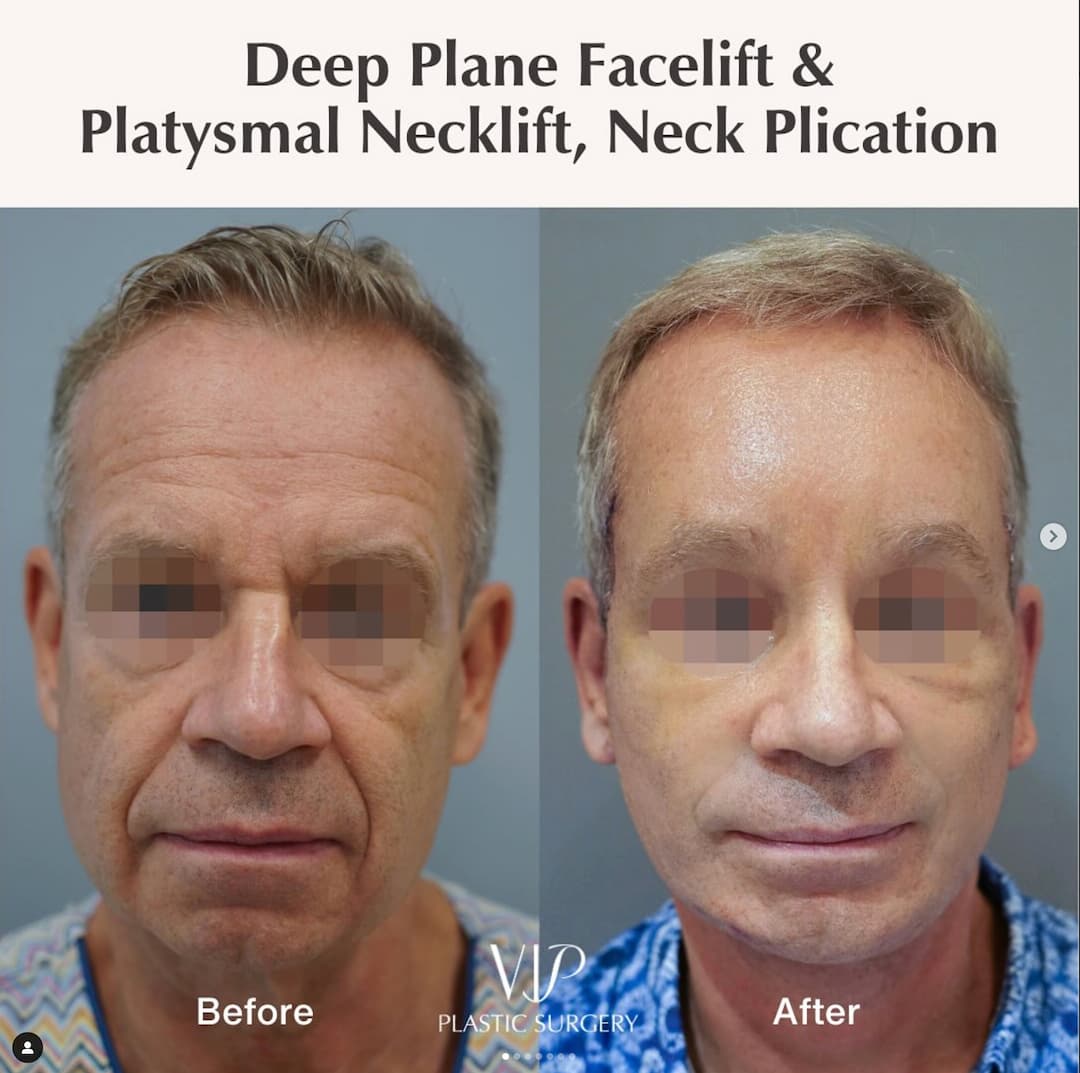
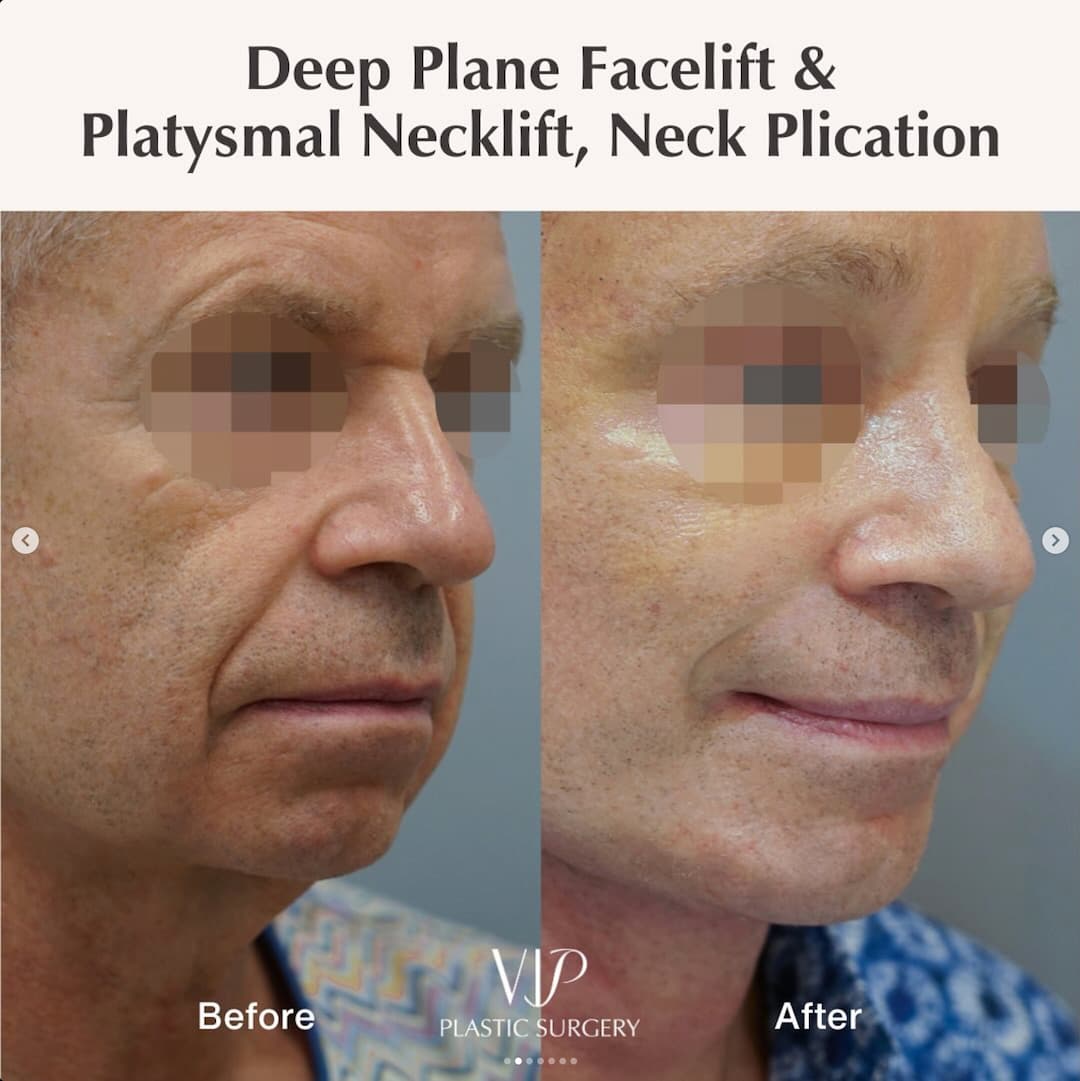
Operation Information
- Surgery Time : 4–5 hours
- Anesthesia Type : IV sedation (light sleep)
- Hospitalization : None
- Stitch Removal : 4–7 Days
- Recovery Time : 1–2 Weeks
Where is the incision line of an Extended Deep Plane Facelift?
Precision in Every Detail: The VIP Approach to Scarring
At VIP Plastic Surgery, a successful facelift result includes minimal scarring. After a thorough assessment based on the patient’s lifestyle factors and hairstyle, surgeons should carefully make a decision on where to begin and end the incision line and minimize visible scarring.
Through specialized surgical techniques, most incision lines become almost invisible within 4 to 6 months post-surgery, allowing patients to enjoy their results with complete confidence.
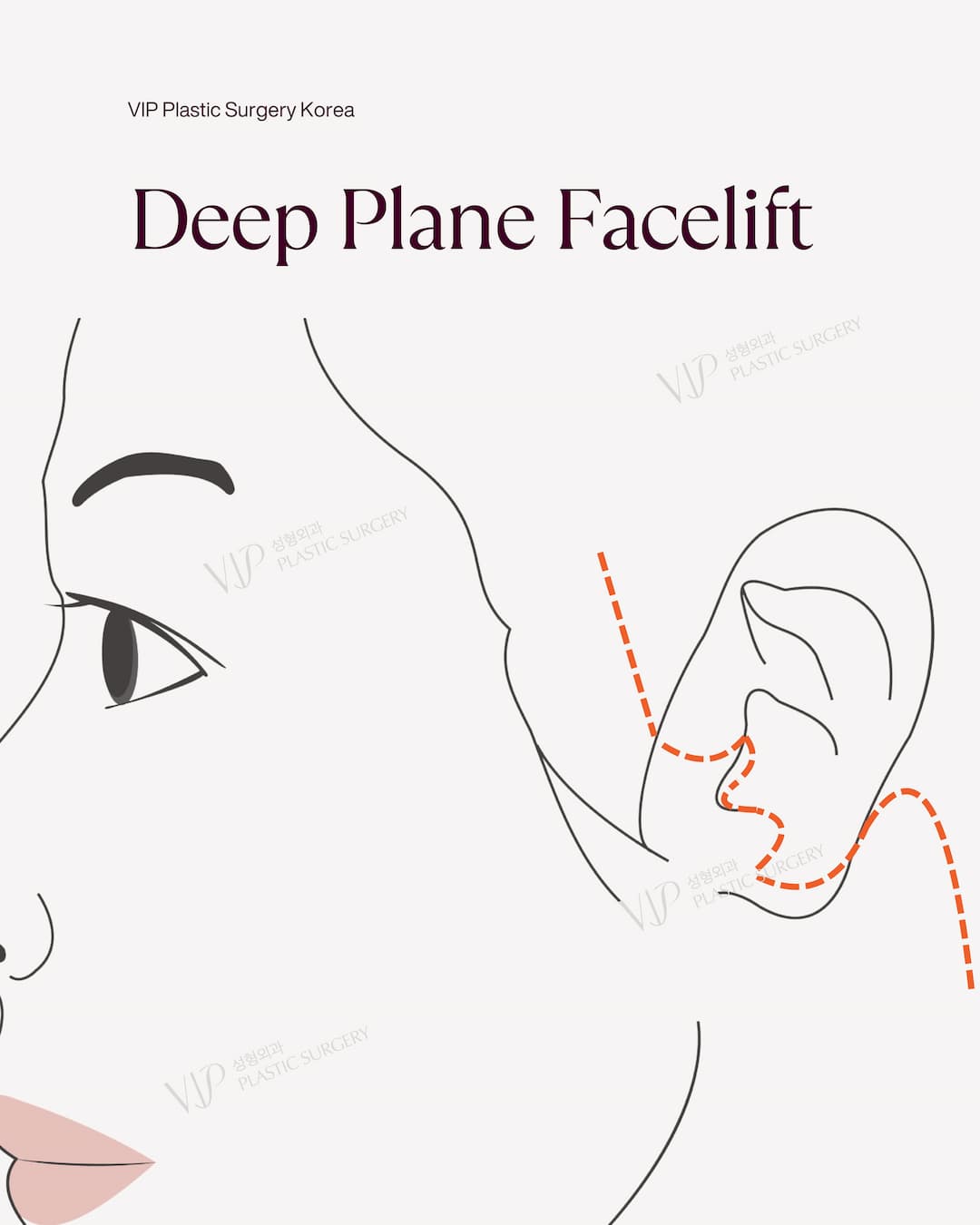
How long is the recovery of an Extended Deep Plane Facelift?
For the first 14 days after the surgery, patients will stay in an all-inclusive VIP medical center for their initial recovery program. This dedicated recovery period allows for optimal healing under Dr. Lee’s supervision and the VIP team’s services.
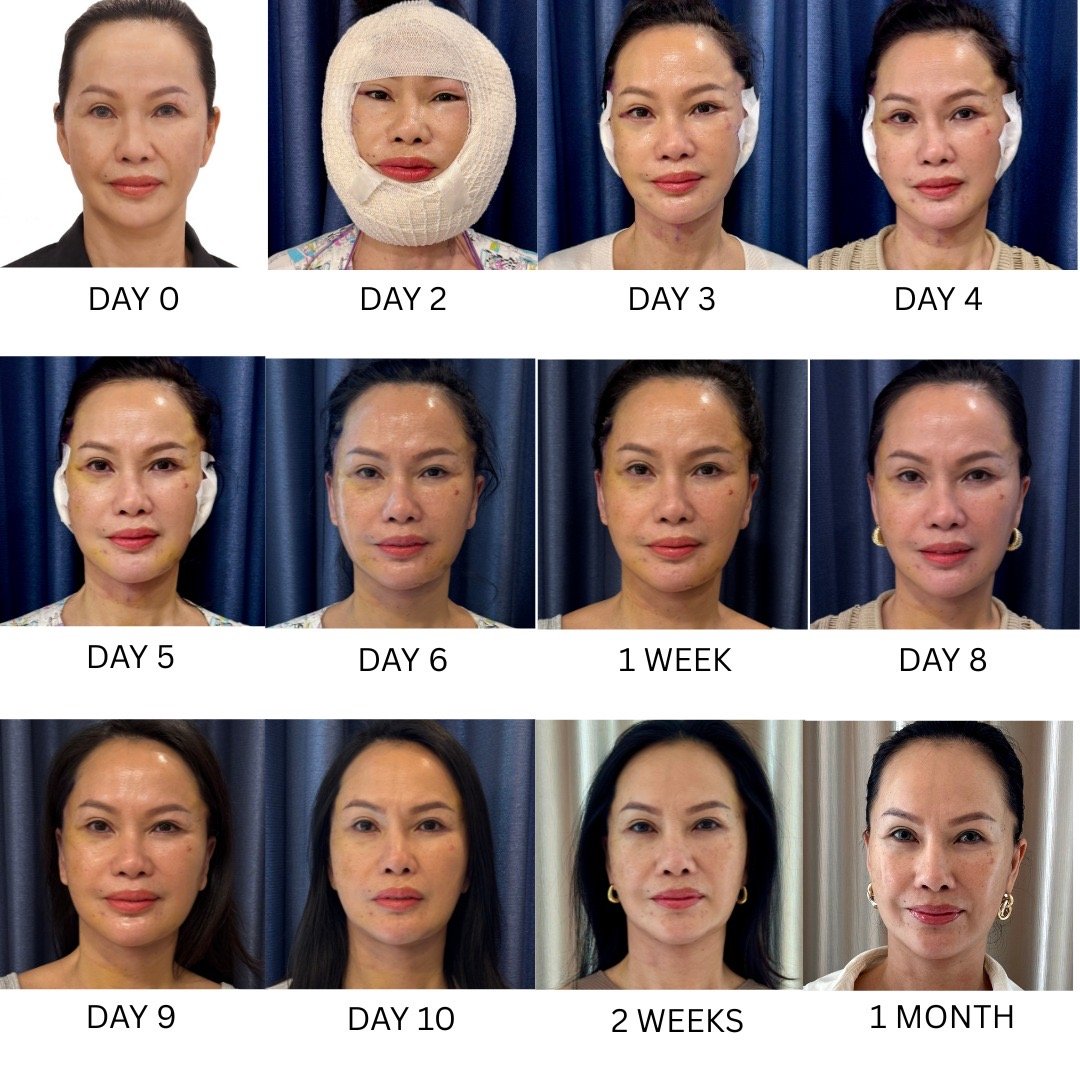
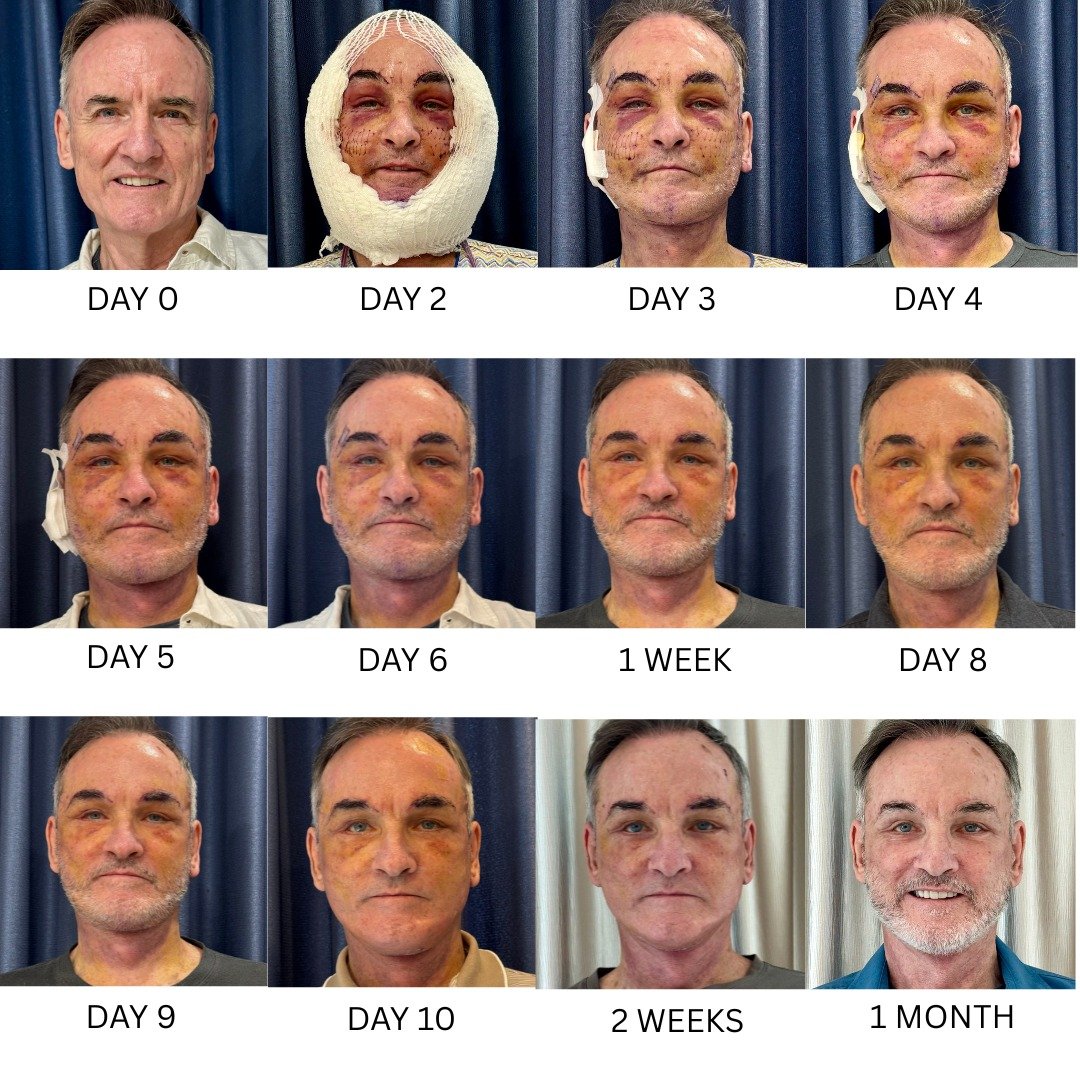
- Hyperbaric Oxygen Therapy accelerates cell rejuvenation and reduces swelling
- Daily Facial Treatments are performed by specialized aestheticians
- Advanced Medications are carefully selected to promote rapid healing
- Personalized Monitoring by Dr. Lee ensures optimal progress at every stage
Located on Jeju Island—a UNESCO World Heritage site—patients heal in an environment blessed with pristine air and pure water. Within this natural paradise, VIP provides a private room for each patient, allowing patients to rediscover themselves, not just refreshed in appearance but renewed in spirit.
Most patients feel ready to return to work and resume social activities within one to two months, looking refreshed and natural. Individual healing varies, but this timeline allows for a comfortable transition back to daily life while ensuring the best possible surgical outcome.
Extended Deep Plane Facelift Technique Compared to Other Facelift Surgeries
EXTENDED DEEP PLANE FACELIFT SURGERY METHOD
Targeted areas: full face, mid-face, nasolabial folds (laugh lines), cheeks, jawline, neck (additional surgery)
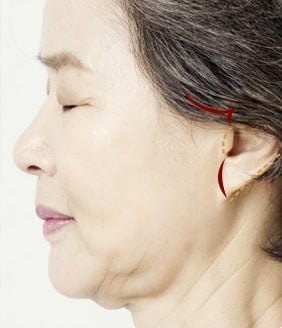
STEP 01
Create a small incision line starting from the hairline to either in front of the ear or behind the ear depending on a patient’s skin and aging condition. The scar lines will disappear as time goes by.
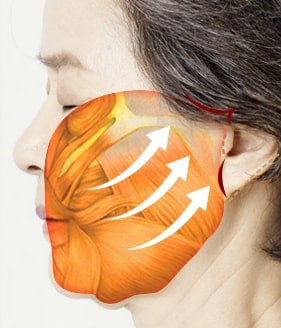
STEP 02
Using the incision line, delaminate the SMAS layer under the subcutaneous tissues, release ligamentous tissues in the anterior part of the face, and create a natural and effective redraping result.
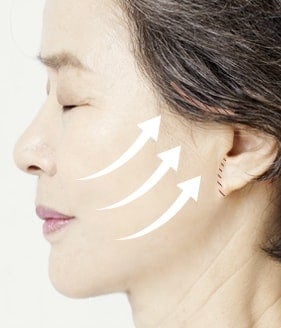
STEP 03
Extended Deep Plane Facelift allows an elevation of soft tissues, a volume addition to the mid-face, and a definition to the jawline compared to High-SMAS facelifts and other traditional facelifts.
TEMPLE LIFT SURGERY METHOD
Targeted areas: loosened eyes, eyebrows
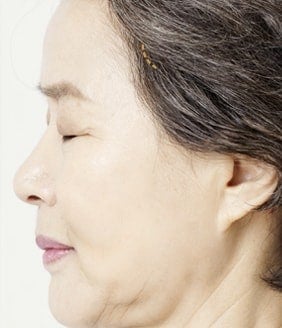
STEP 01
Create a small incision inside the hairline.
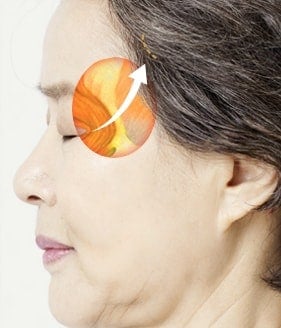
STEP 02
Using the incision line, delaminate the SMAS layer under the subcutaneous tissues and elevate the temple areas.
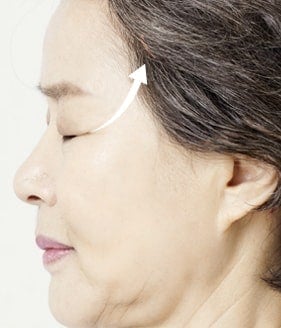
STEP 03
Consider the patient’s condition in severity and complexity of the aging process and excise the excess skin and fats. Fix the suturing line inside the hairline where it is not visible.
MINI FACELIFT SURGERY METHOD
Targeted areas: partial cheek areas, partial mid-face area, and partial jawline
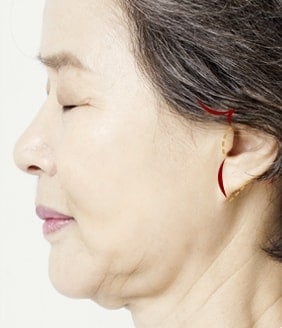
STEP 01
Make a minimum incision starting from the hairline, inner ears, and earlobes, to the back of the ear.
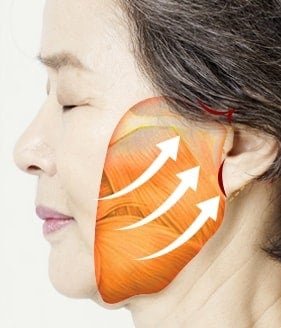
STEP 02
Using the minimum incision line, delaminate the SMAS layer under the subcutaneous tissues and pull the skin layer and SMAS layer together.
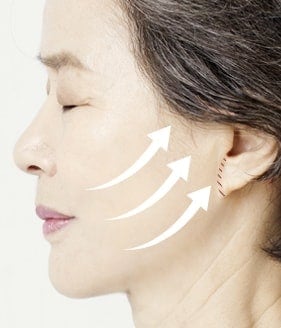
STEP 03
Consider the patient’s wrinkle lines and the complexity of the aging process and excise the excess skin and fat tissues. Tightly fix the skin and suture them together.
Comparison Between the Different Types of Facelift Surgeries
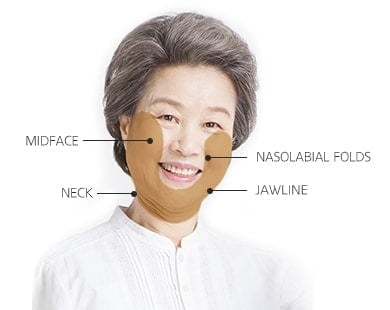
Extended Deep Plane Facelift
Extended Deep Plane Facelift is highly effective for a full face surgery, specifically front and middle part of the face, nasolabial folds (laugh lines), cheeks, jawline, and neck to treat skin laxity, wrinkles, and muscles.
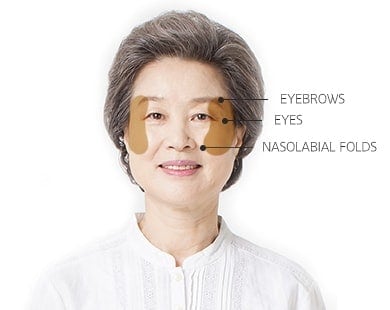
Temple Lift
The Temple Lift focuses on the temple areas – eyes, eyebrows, and nasolabial folds by removing excess fats and skin and lifting.
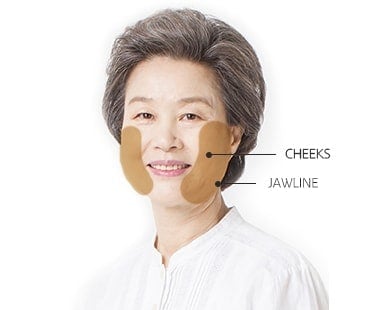
Mini Facelift
Mini facelift improves lifting in the areas near the cheeks and jawline rather unlike the Extended Deep Plane Facelift which is a full facelift.
Please note that Mini Facelift and Temple Lift have limitations in the result especially the laugh line areas when compared to the Extended Deep Plane Facelift. For patients looking for a full face-lifting effect, we highly recommend the Extended Deep Plane Facelift.
Real Facelift Results
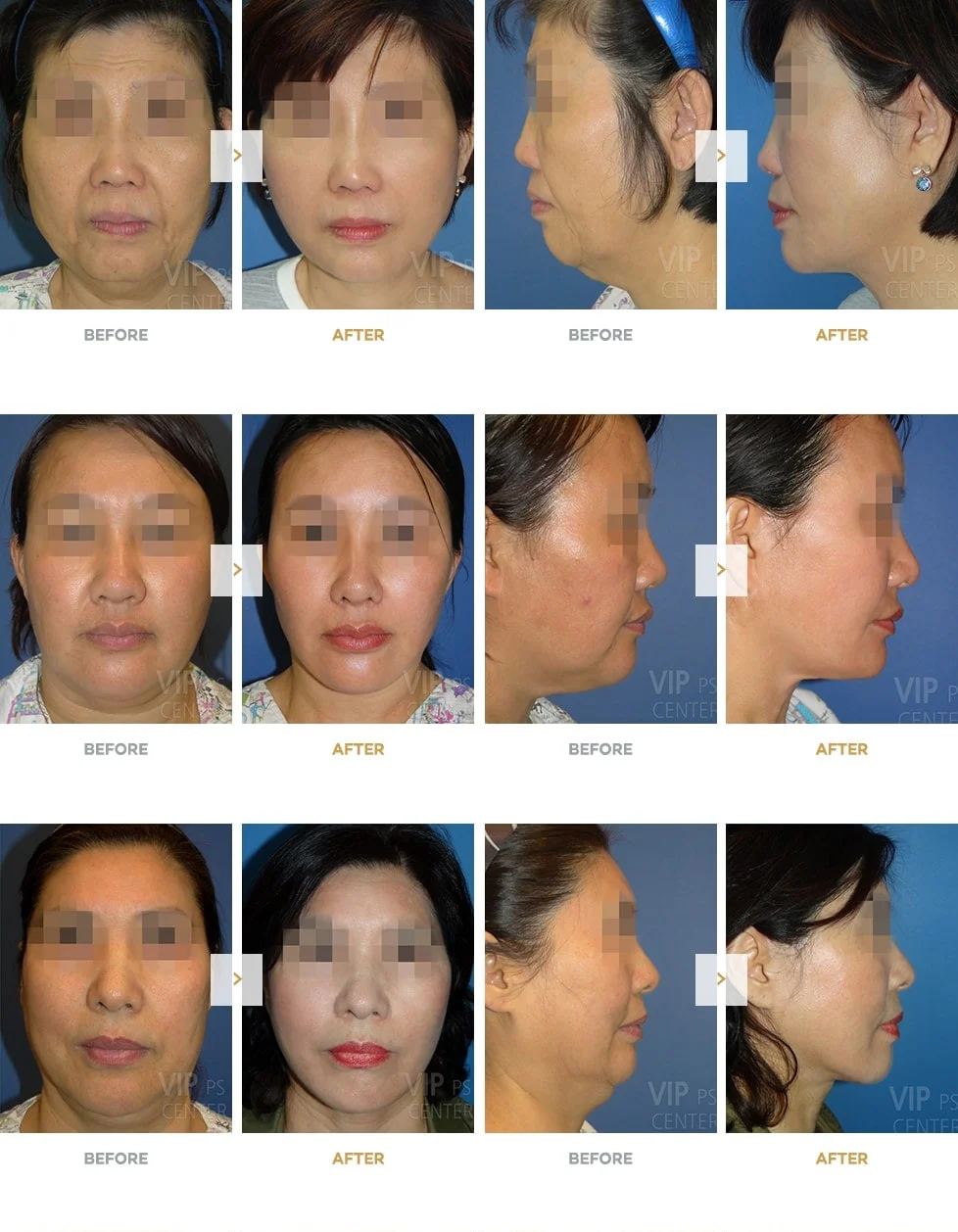
What is the Cost of an Extended Deep Plane Facelift?
Understanding Your Investment in Facial Rejuvenation
Surgical costs vary depending on the operating surgeon, patient’s condition, surgical method, and many other factors. Every patient deserves a personalized plan tailored to their unique anatomy and aesthetic goals.
As a first step, we encourage you to start chatting with us for a free online photo consultation with our doctors. You will receive comprehensive guidelines about surgeries recommended by VIP doctors and what to expect during your stay at VIP.
Who Is the Ideal Candidate for Extended Deep Plane Facelift?
- Desire the most comprehensive and advanced facial rejuvenation available
- Are between 40-60 years of age with moderate to severe aging sign
- Show visible signs of facial aging, including:
● Loss of jawline definition
● Moderate to severe sagging of facial tissues
● Pronounced nasolabial folds (laugh lines) and jowls - Have found thread lifts, lifting lasers, or previous facelifts insufficient for their rejuvenation goals
- Had previous orthognathic (two-jaw surgery) or facial contouring surgery
Maintaining Your Extended Deep Plane Facelift Results
Enhancing Longevity with Face Fat Grafting
As people age, a volume loss in the face is part of the normal aging process. To restore youthful volume, face fat grafting is highly recommended for many people, along with facelift and necklift. Face fat grafting is a safe and quick surgical procedure that allows a soft volume to your face, working synergistically with the Extended Deep Plane Facelift and extending the rejuvenating effects.
Related Surgeries
Deep Plane Facelift Patient V-Log
FAQ
Recovery takes about 10–12 days, and Dr. Myung Ju Lee will be checking your stitches every day to ensure they are healing properly and to prevent any complications. For patients undergoing advanced procedures such as the Deep Plane Facelift, which requires meticulous dissection and layered lifting, we recommend staying in Jeju for a minimum of 10 days after the surgery to allow for safe recovery and follow-up care.
Updated October 4th, 2025






















